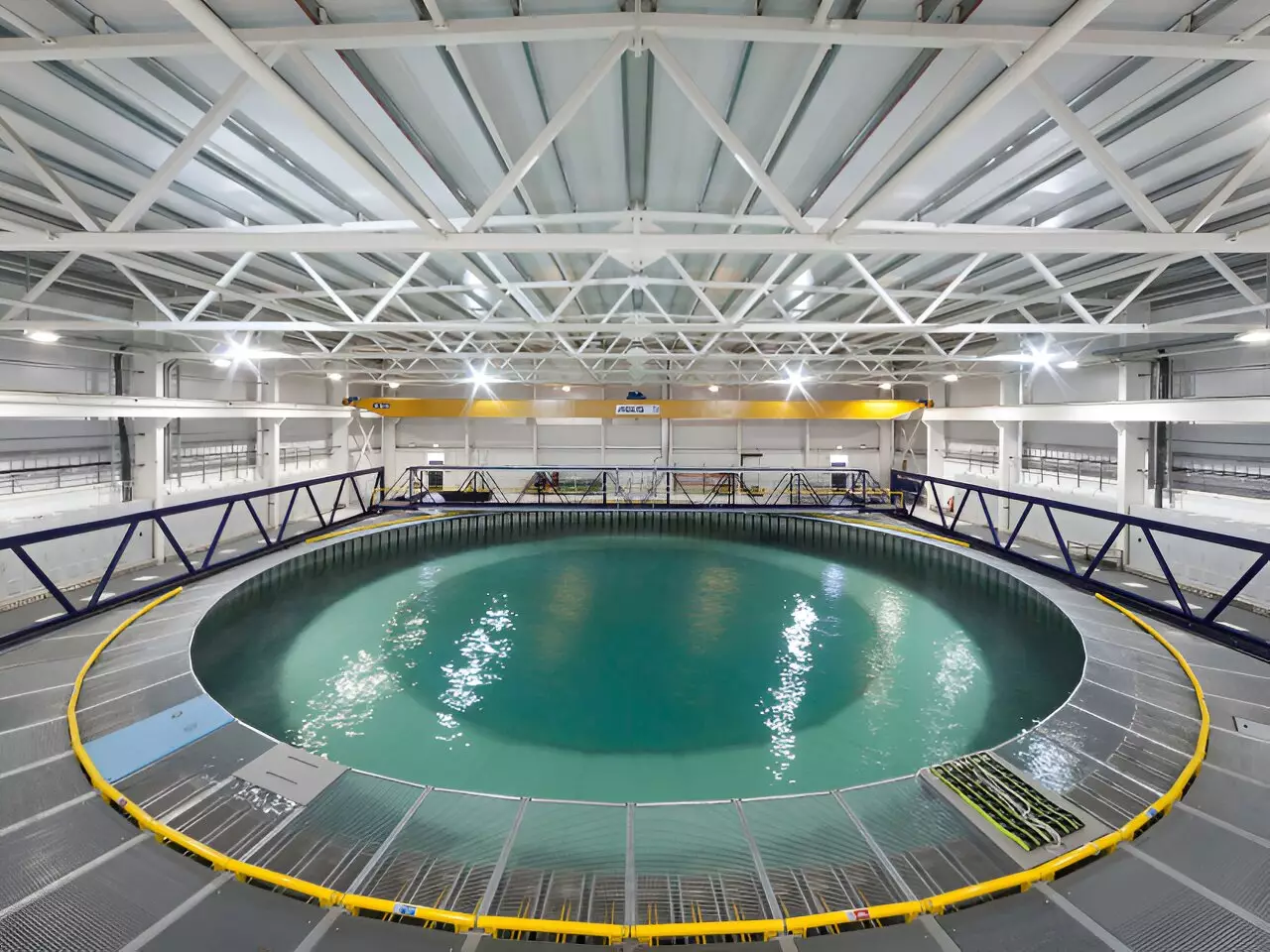The ocean has long been viewed through a simplified lens focusing primarily on two-dimensional wave behavior. Recent revelations in marine science, however, suggest that the reality of ocean waves is far more intricate than previously understood. A groundbreaking study published in the journal Nature highlights the potential for ocean waves to reach extraordinary heights and complexity under specific conditions, fundamentally altering our approach to understanding wave dynamics.
Traditionally, scientists have approached ocean waves as two-dimensional entities—simplifying their analysis into a model that doesn’t account for the chaotic interactions occurring in nature. The new research, which features contributions from leading universities in the UK, argues for a paradigm shift toward recognizing waves as three-dimensional structures. These three-dimensional waves arise when multiple wave systems intersect and collide, significantly increasing their potential height and steepness compared to the projections made from traditional 2D models.
This groundbreaking study indicates that in conditions where waves come from various directions, their symmetrical formation is disrupted. The wave steepness under such circumstances can potentially reach levels that are four times greater than previously assumed. Dr. Samuel Draycott of The University of Manchester highlights, “In these directional conditions, waves can far exceed the commonly assumed upper limit before they break.” The consequences of this shift in understanding are profound, especially in a world increasingly influenced by climate change and extreme weather events.
Wave breaking is a crucial aspect of understanding ocean dynamics, with significant implications for numerous environmental processes. The standard expectation is that once a wave breaks, it dissipates energy, forming a characteristic white cap. However, in the case of three-dimensional waves, breaking does not signify the end of growth; instead, these waves have the ability to continue rising even after breaking has occurred. This revelation introduces an unprecedented scenario: instead of diminishing, a broken wave with a wide angle of directional spreading can keep accumulating energy and height.
Professor Ton van den Bremer from TU Delft articulates the importance of this phenomenon: “Once a conventional wave breaks, it forms a white cap, and there is no way back. But when a wave with a high directional spreading breaks, it can keep growing.” This capability of waves to gain momentum post-breaking opens new avenues for examining energy transfer processes in the marine environment, especially as they relate to carbon dioxide absorption and the transport of microplastics in the ocean.
Perhaps one of the most immediate implications of this research is its potential impact on the design of offshore structures. Current engineering practices and safety features are largely based on two-dimensional models of wave behavior, which may lead to significant underestimations of storm impact and structural strain. Dr. Mark McAllister from the University of Oxford points out, “The three-dimensionality of waves is often overlooked in the design of offshore wind turbines and other marine structures… This could lead to underestimations of extreme wave heights and potentially designs that are less reliable.”
As we face increasing frequency and intensity of storms—exacerbated by climate change—the need to reassess and adapt our engineering principles is paramount. A reactive approach to wave dynamics could save millions in damages and improve safety for marine operators and structures alike.
The implications of this study extend beyond engineering and safety. Understanding the intricate dynamics of breaking waves can also enhance our fundamental grasp of ocean processes, including those related to bioactive material distribution, nutrient cycles, and the overall health of marine ecosystems. This understanding is crucial in managing and preserving oceanic health amid environmental change.
Looking forward, researchers are excited about the potential applications of their findings. Armed with innovative three-dimensional wave measurement techniques developed at the FloWave Ocean Energy Research Facility, scientists are now better positioned to study these phenomena in detail. Principal Experimental Officer Dr. Thomas Davey emphasizes the importance of creating conditions that replicate real-world scenarios in a controlled environment, asserting that “this work takes this to a new level by using the multi-directional capabilities of the wave basin to isolate these important wave-breaking behaviors.”
The study of three-dimensional ocean waves represents a crucial leap forward in our understanding of marine science. It challenges existing paradigms and opens new doors for future research, engineering applications, and our ongoing efforts to address the many environmental challenges of our time.


Leave a Reply